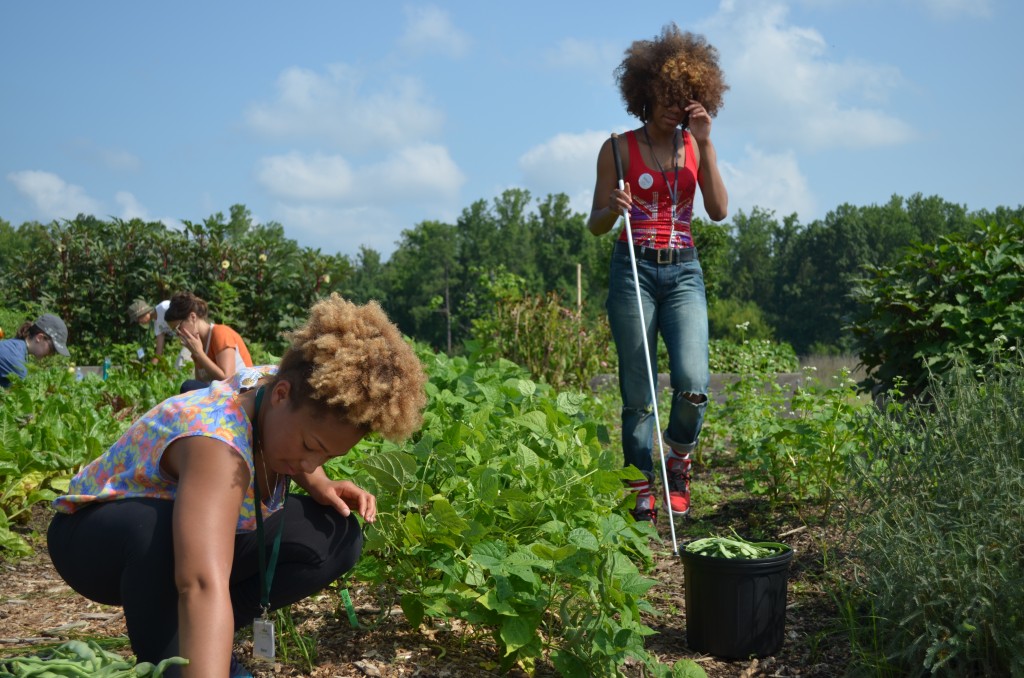Horticulture Therapy Benefits

Gardening provides a sensory-rich experience for visually impaired individuals. Photo by Jonah Holland.
Gardening is more than hobbies and harvests. It is therapeutic horticulture and more. After hours staring at a computer screen or glued to a TV, Dr. Jean Larson recommends heading outdoors to garden or immerse oneself in a natural setting.
“Nature is something we all need, a part of who we are,” said Larson, manager of the Nature-Based Therapeutics Services at the University of Minnesota Landscape Arboretum. Research shows that natural surroundings can calm us and more. They remind us of the importance of conservation, teach us balance and enrich our lives with meaning.
“In the garden, the brain looks at nature with a non-directed focus,” Larson explained. “As someone watches a butterfly, hears a bird or hears the trickling of a water fountain, the body has the ability to shut down, reboot and refresh.”

Adults can learn from youngsters who enthusiastically heed nature’s call to come outdoors and get their hands dirty.
Rejuvenation through gardening and other plant-related activities is known as therapeutic horticulture. It is purposeful activities in sensory-enriched and/or raised-bed gardens where individuals and groups experience healing outcomes through colors, textures and fragrances. Related educational programs and services also teach participants, such as stressed students and sensory-overloaded office staff, to ‘stop and smell the roses’ so nature can do its magic through therapeutic horticulture. By-products can be equally impressive, such as growing independence, improving motor skills and promoting integrated communities.
Horticulture therapy is a more formal approach for applying garden-based activities to those with conditions like mental illness, Parkinson’s disease or the aftermath of stroke. Licensed professionals conduct one-on-one needs assessments, set measurable goals and use natural connections with plants as part of their treatment plans. By working with plants, participants learn ways to adapt, modify and re-engage in things they love or hope to do again. For example, gardening can positively impact those battling chemical addiction. “Participants learn how to set intentions for self-care as they give care to a plant,” Larson said.
Larson’s interest in horticulture therapy developed from her own childhood experiences. Struggling with an non-diagnosed learning disability, early on she had to develop her own coping mechanisms. “Animals and gardening were my ‘go to’ places for self-care,” she said. The techniques worked, and she went on to college. Combining passions for plants and people, she designed her own under-graduate degree titled “environmental therapy degree” by combining psychology, sociology and biology. Later, she completed her master’s degree in therapeutic recreation and outdoor education, and ultimately her Ph.D. in therapeutic recreation with a minor in integrative medicine.
“Everyone has an opportunity to learn about the ‘big garden’—the Earth we are a part of—when we’re in a garden,” Larson added. “Nature is a free, accessible and equitable means to well-being for all.”
Additional resources about horticulture therapy and related benefits are made available by the American Horticulture Therapy Association and by Minnesota’s Landscape Arboretum.
This article first published in the Richmond Times-Dispatch, February 2016.